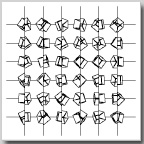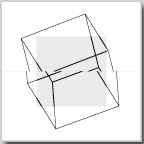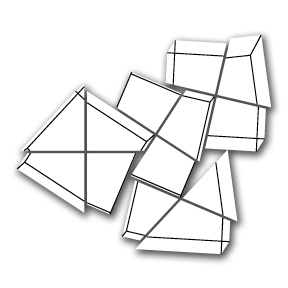Chapter 9: Computer Artists
9.3 Manfred Mohr

Manfred Mohr was born in 1938 in Pforzheim (Germany). He studied lithography at the Ecole des Beaux Arts, in Paris. He turned from traditional painting to the computer in 1969 to realize his artistic interest in Constructivist artforms. He focused his artistic vocabulary and aesthetic expression by working only in black and white, not reverting to a color palette until 1998, using a plotter as output from the computer.

As quoted by Goodman in her book Digital Visions, Mohr says “The paradox of my generative work is that form-wise it is minimalist and content-wise it is maximalist.” He has chosen the cube, and the seemingly uncountable variations of it as his primitive element. Mohr has the computer start with a cube and transform it through distortions and various rotations. According to Mohr, “Since 1973, in my research, I have been concentrating on fracturing the symmetry of a cube (including since 1978
n-dimensional hypercubes), using the structure of the cube as a “system” and “alphabet”. The disturbance or disintegration of symmetry is the basic generator of new constructions and relationships.”

Former Ohio State University Eminent Scholar in Design, Mihai Nadin said of Mohr, “In order to free his explorations from the burdens of psychological patterns, Manfred Mohr literally harnesses randomness and makes it operate on the entities selected for exploration. “
In 1971, Mohr was featured in a one-man show at the Musee d’Art Moderne de la Ville de Paris, which has been marked as the first museum sponsorship of a one-man exhibition of computer art. Mohr has also been honored by winning Ars Electronica in Linz.

“The computer became a physical and intellectual extension in the process of creating my art. I write computer algorithms i.e. rules that calculate and then generate the work which could not be realized in any other way. It is not necessarily the system or the logic I want to present in my work, but the visual invention which results from it. My artistic goal is reached, when a finished work can visually dissociate itself from its logical content and convincingly stand as an independent abstract entity.”
Manfred Mohr Retrospective on the Rave WebMuseum of Cyberart

